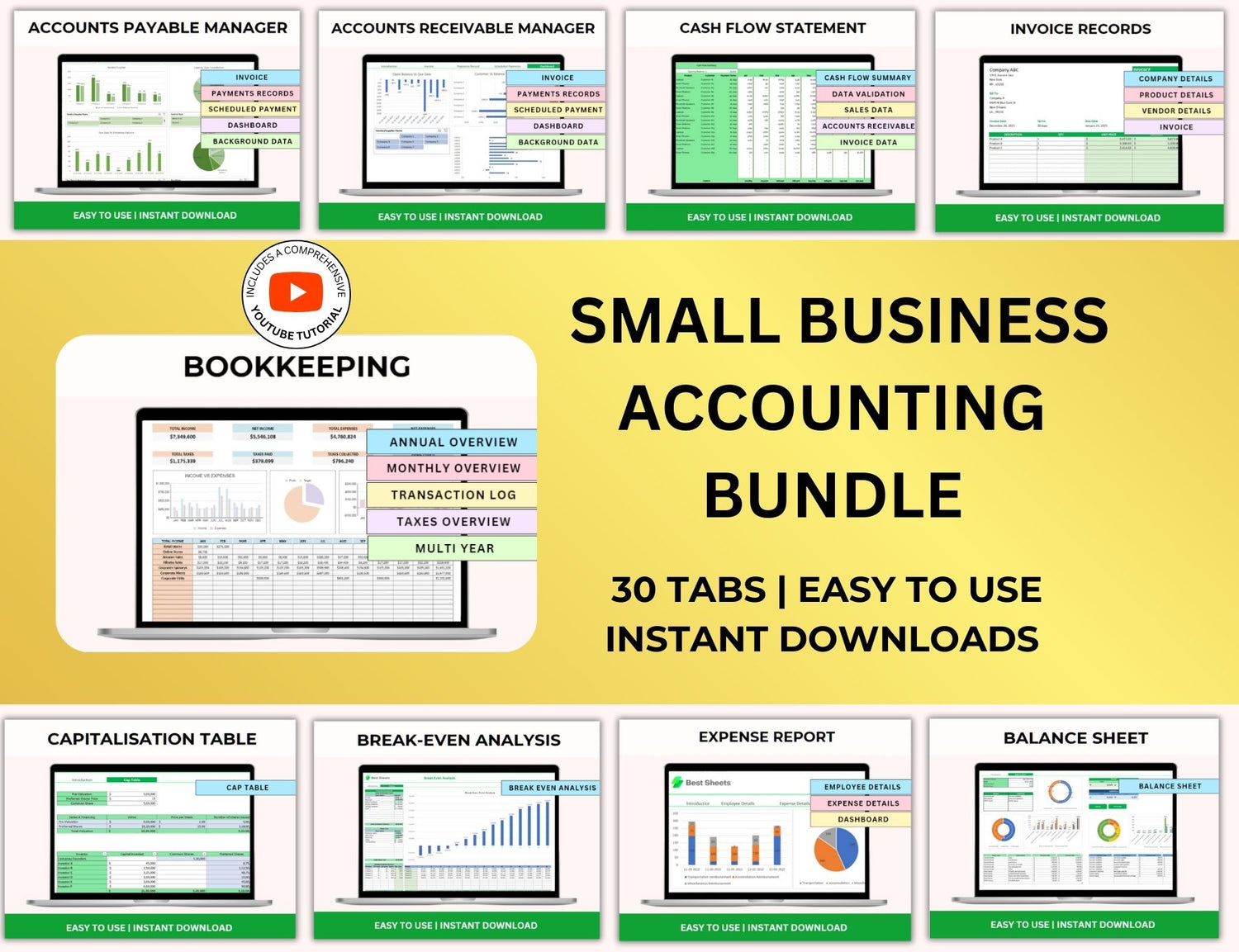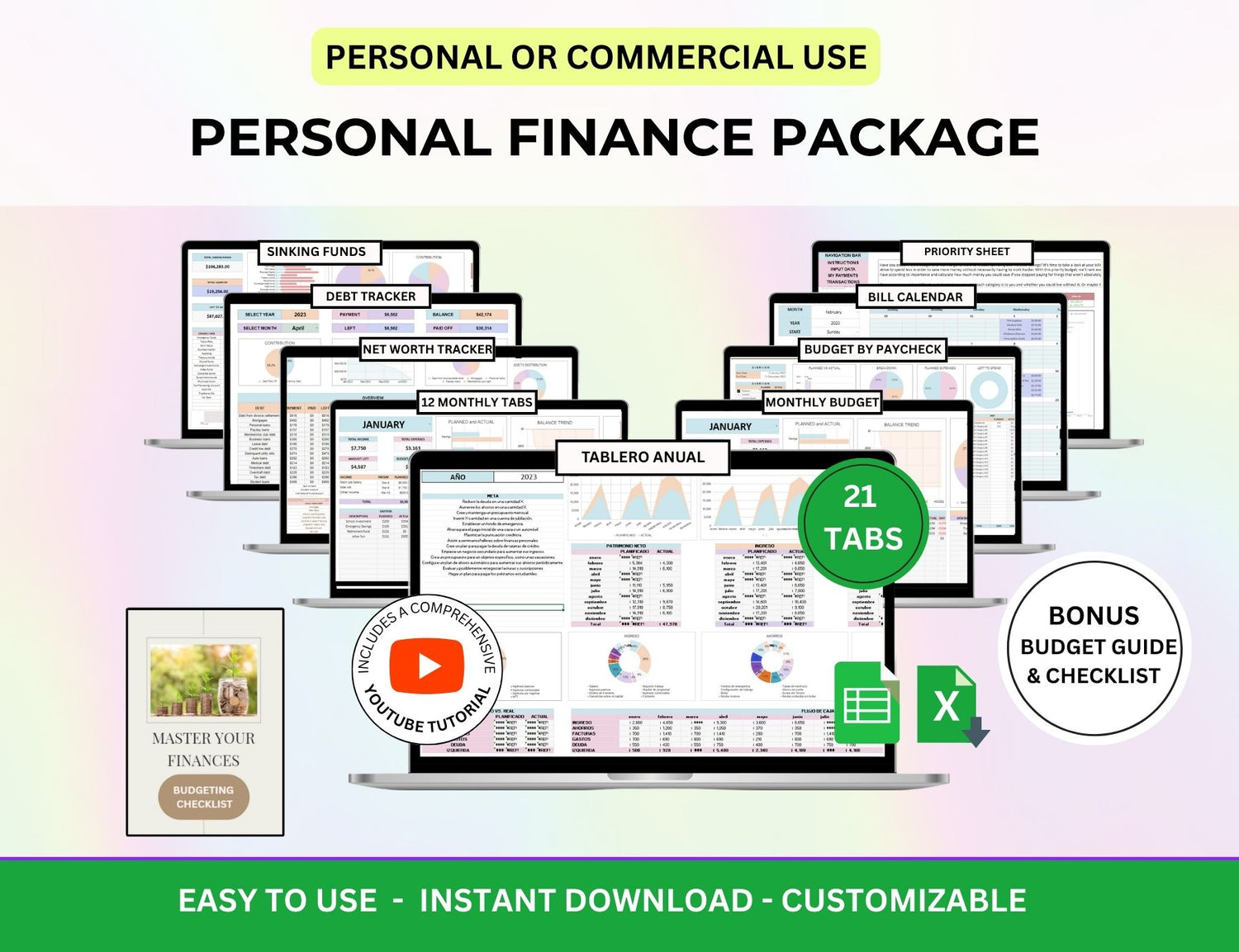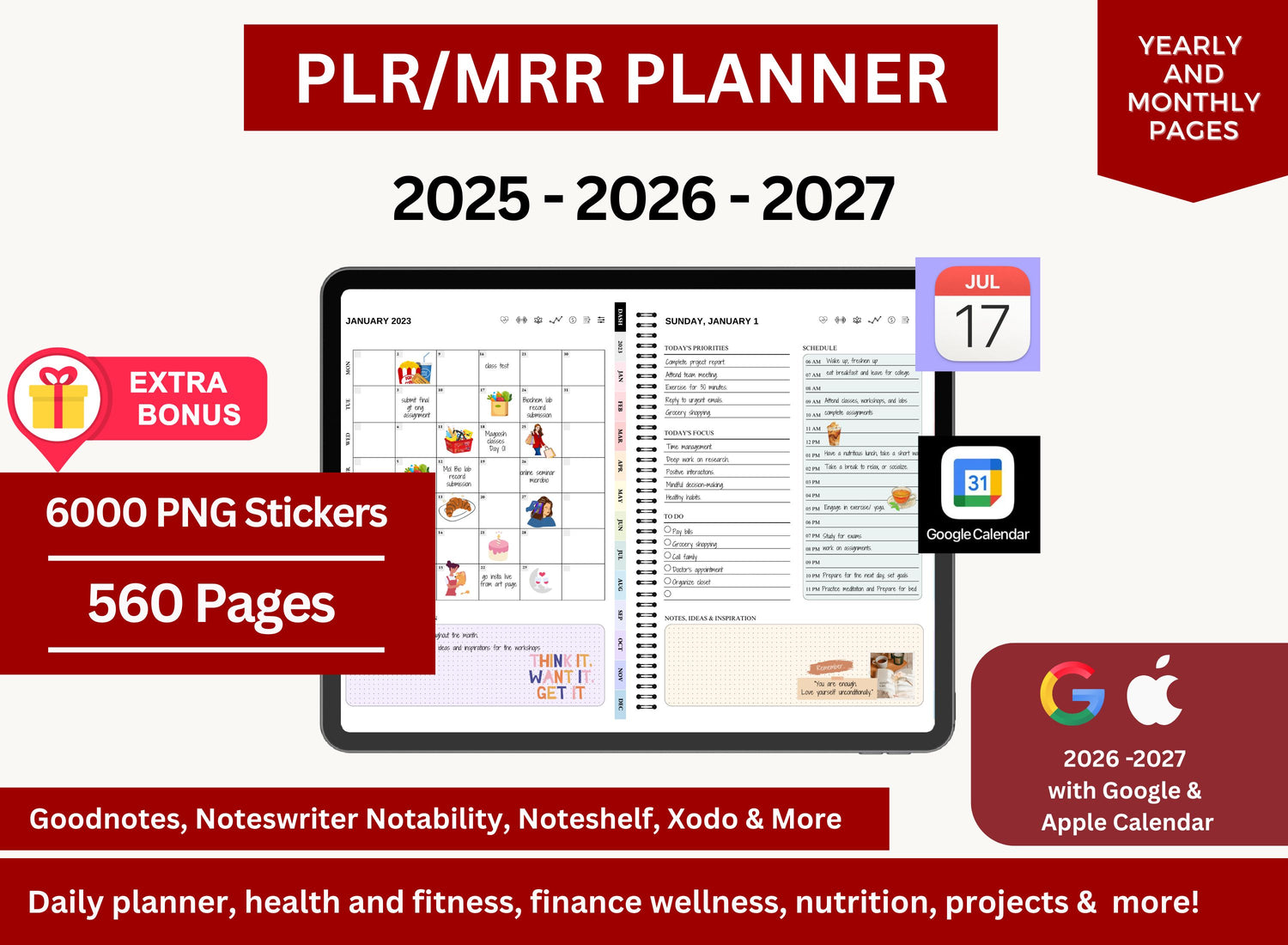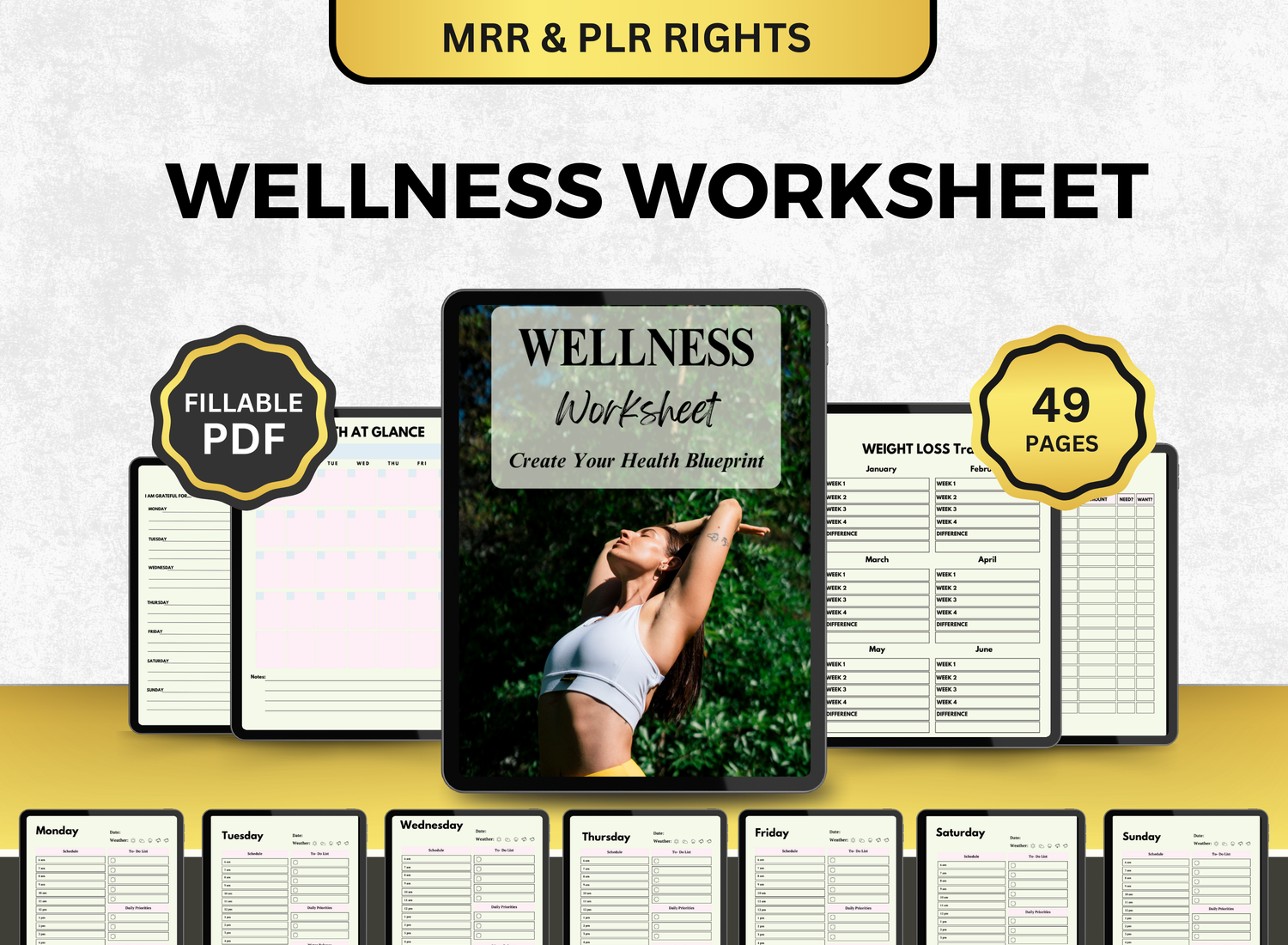How to Create a Finance Tracker in Google Sheets
Anyone who wishes to make wise judgments and maintain control over their financial objectives must manage their personal finances. A finance tracker is one of the most effective ways to keep tabs on your finances. With its ease of use, adaptability, and accessibility, Google Sheets is a great tool for creating your own financial tracking spreadsheet.
This tutorial will help you create a finance tracker template in Google Sheets, regardless of your level of spreadsheet acumen. After all is said and done, you will have a personalized finance tracker that will help you keep track of your earnings, outlays, investments, saves, and more.
Page Contents
☰🧮Why Use Google Sheets for Your Finance Tracker?
One of the most widely used free spreadsheet programs is Google Sheets, which has various advantages for keeping track of finances:
- Free and Accessible: There is no cost to use Google Sheets. Furthermore, because it is cloud-based, you may access your tracker from any internet-connected device.
- Real-Time Collaboration: Google Sheets is an excellent tool for joint budgeting since it makes it simple to share your financial tracker with others, including a partner or financial counselor.
- Customization: With Google Sheets, you can create a fully personalized financial planner that meets your specific needs, unlike other inflexible financial tools.
- Automation: You may save time and effort by using Google Sheets' formulae and functions to automate your financial computations.
- Charts and Visualization: Making charts with your financial data in Google Sheets facilitates trend analysis and decision-making.
✒️Step-by-Step Guide to Creating a Finance Tracker Template Using Google Sheets
Step 1: Set Up a New Google Sheets Document
To begin building your finance tracker, follow these steps:
- Open Google Sheets: Go to Google Sheets and sign in to your Google account.
- Create a New Document: Click the “+ Blank” button to open a new spreadsheet.
- Name Your Document: At the top-left of the screen, click “Untitled Spreadsheet” and rename it to something like “Personal Finance Tracker”.
Once your new spreadsheet is set up, you can start designing the layout for your finance tracker.
Step 2: Create the Structure of Your Finance Tracker
Any financial categories that are significant to you, such as income, expenses, savings, and investments, should be included in your money tracker. An outline for your finance organizer spreadsheet can be found below.
1. Income Section
To begin, include a section for tracking your earnings. Enter all of your earnings here, including salaries, side jobs, freelance income, and passive income. Configure the columns as follows:

- Date: The date you received the income.
- Source: The source of the income (e.g., salary, freelance job, rental income, etc.).
- Amount: The amount of money received.
2. Expense Section
The next step is to create a section where you can keep track of your monthly spending. This can be separated into variable and fixed costs. This is how this section should be structured:
Fixed Expenses
These are regular expenses that don’t change much month to month.

Examples include:
- Rent/Mortgage
- Utilities (electricity, water, internet)
- Insurance
- Loan Payments (car, student loans)
Variable Expenses
These expenses fluctuate each month and can include things like:

- Groceries
- Dining out
- Transportation (gas, public transport)
- Entertainment
3. Savings and Investments Section
Monitoring your assets and savings is essential, whether you are saving for a specific goal, retirement, or an emergency fund. Your tracker ought to have:

- Date: The date you made a deposit or investment.
- Category: The type of savings or investment (e.g., retirement, emergency fund, stock investments).
- Amount: The amount you contributed.
4. Debt Tracking Section
You should include a section to track your debts, such as credit card balances, loans, and mortgages. This section may contain:

- Debt Name: The name of the debt (e.g., Visa credit card, student loan).
- Minimum Payment: The minimum required payment each month.
- Balance: The remaining balance of the debt.
- Payment Made: The actual amount paid towards the debt.
5. Summary Section
A section that summarizes the main points can help you stay on top of things. Your whole income, expenses, savings, and remaining balance at any one time will all be shown to you. Included in this section are:
- Total Income: The sum of all your income entries for the month.
- Total Expenses: The sum of your fixed and variable expenses.
- Total Savings: The total amount saved or invested.
- Remaining Balance: The difference between your income and expenses.
Step 3: Add Formulas for Automatic Calculations
You may automate computations using Google Sheets by adding formulas, which is essential for easily managing your accounts. The following formulas are crucial for your money tracker template.
1. Formula for Total Income
Using the SUM formula, you may get your monthly revenue total. The formula for total income, assuming your income information is in column C (beginning from row 2), would be:
=SUM(C2:C30)
This sums up all the amounts in the income column.
2. Formula for Total Expenses
The total costs can be determined by adding up all of the fixed and variable costs. If column D contains your expenses, use the formula below:
=SUM(D2:D30)
3. Formula for Remaining Balance
To calculate your remaining balance, subtract total expenses from total income:
=Total Income - Total Expenses
You can use this formula to track your balance at the end of each month.
4. Formula for Savings
You may create a formula to determine how much you've saved overall if you're saving a certain amount each month. If, for instance, your savings are listed in column E, utilize:
=SUM(E2:E30)
5. Formula for Debt Payments
In the debt area, you can use a sum formula to keep track of your debt payments. This will show you how much you have paid so far on your debts.
Step 4: Visualize Your Financial Data
Creating charts that visually show your financial data is possible using Google Sheets. Making charts can assist you in rapidly seeing patterns and trends in your earnings, outlays, and savings.
Creating a Simple Pie Chart for Expenses
- Select the data range for your expenses.
- Go to the Insert menu and click Chart.
- Choose Pie Chart from the chart options.
- Customize the chart to reflect different categories of your expenses.
Creating a Line Chart for Savings Over Time
- Select your savings data.
- Go to the Insert menu and click Chart.
- Choose Line Chart to visualize your savings progress over the year.
Charts can help you better understand your financial habits and make adjustments to stay on track.
Step 5: Regularly Update Your Finance Tracker
For a finance tracker spreadsheet to be successful, consistency is essential. Make sure to update your tracker on a regular basis by entering your earnings, outlays, and savings. These pointers can help you keep your financial tracker up to date:
- Update weekly: Enter your expenses and income at least once a week to keep your tracker current.
- Categorize everything: Be thorough with categorizing your income and expenses. This will help you spot trends in your spending.
- Revisit your goals: Every few months, review your financial goals and see if you're on track to meet them.
📲Queries on Tracking Finances Using Google Sheets!
1. How to make a finance tracker in Google Sheets?
╰┈➤ˎˊ˗ To begin, open a new Google Sheet and make columns for the date, description, amount, category, and type (cost or income). Every row shows a new transaction. Use drop-down lists for categories such as "Salary," "Utilities," "Rent," and "Groceries" to make tracking simpler. Formulas such as =SUMIF() can be used to total values by category or type, and conditional formatting can be used to highlight income against expenses.
2. How to do finance in Google Sheets?
╰┈➤ˎˊ˗ You can use the options and formulas available in Google Sheets to handle your finances. Use =SUM() for overall computation, =AVERAGE() for trends, and =IF() for conditional logic (e.g., highlighting excessive spending). By adding a column that compares your objective and actual savings, you can even define savings targets. You can keep track of everything with Google Sheets, including monthly budgeting and everyday spending.
If you want a more cohesive method and layout, we highly suggest creating your own finance tracker in Google Sheets! This article details the step-by-step on how to create your own!
3. How to create a tracker in Google Sheets?
╰┈➤ˎˊ˗ Clearly describing what you wish to track, such as transactions, invoices, or investments, is the first step in creating any type of tracker. To make navigation easier, utilize checkboxes, data validation, and filters, and arrange your columns with pertinent headings (date, item, status, etc.). To distinguish between various data categories (such as expenses, income, and summary), use tabs. To cut down on errors and save time, automate computations whenever you can.
For a more in-depth tutorial, this article provides a step-by-step guide!
4. How do I create a KPI tracker in Google Sheets?
╰┈➤ˎˊ˗ Using a KPI (Key Performance Indicator) tracker, you may keep an eye on financial measures such as debt reduction, spending efficiency, and monthly savings rate. After creating a new sheet called "KPI Dashboard," utilize formulas to extract important information from your financial tracker. Show outcomes using color-coded indicators, progress bars, and charts to make insights quick and easy to interpret.
🔎Frequently Asked Questions (FAQs)
1. Can I use Google Sheets to track multiple accounts or categories?
╰┈➤ˎˊ˗ Indeed! By including additional columns for every account or financial category, you may keep track of several accounts or categories. For instance, you could have distinct columns for various credit card balances, savings account deposits, and checking account spending.
2. Can I access my finance tracker Google Sheets on mobile devices?
╰┈➤ˎˊ˗ You definitely can! Google Sheets is a cloud-based program with its own mobile device application that you can log-in on and access any spreadsheet in your account. You can update your tracker while on the move with ease thanks to the Google Sheets app for mobile devices.
3. How do I track irregular expenses like annual subscriptions?
╰┈➤ˎˊ˗ To deal with irregular expenses, you can either create a new column for "Annual Expenses" or put them up as one-off entries in the expense section. Then, when the payment is due, you can just add it to your finance planner.
4. Can I use Google Sheets for both personal and business finance tracking?
╰┈➤ˎˊ˗ Yes! Google Sheets may be used to track finances for both individuals and businesses. Although you would need more categories for business, such as revenue, company expenses, taxes, etc., the fundamental arrangement for tracking income and expenses is the same.
5. Can I automate financial calculations in Google Sheets?
╰┈➤ˎˊ˗ Indeed! With Google Sheets, you can easily track your finances without doing any math by using formulas to automatically generate totals, balances, and saves.
Using Google Sheets to create a finance tracker is an easy yet effective approach to manage your money. You may create a finance tracker spreadsheet to keep tabs on your earnings, outlays, saves, and investments by following the instructions in this article. With Google Sheets' charting features, formulas, and customization choices, you'll have a flexible tool for money management.














